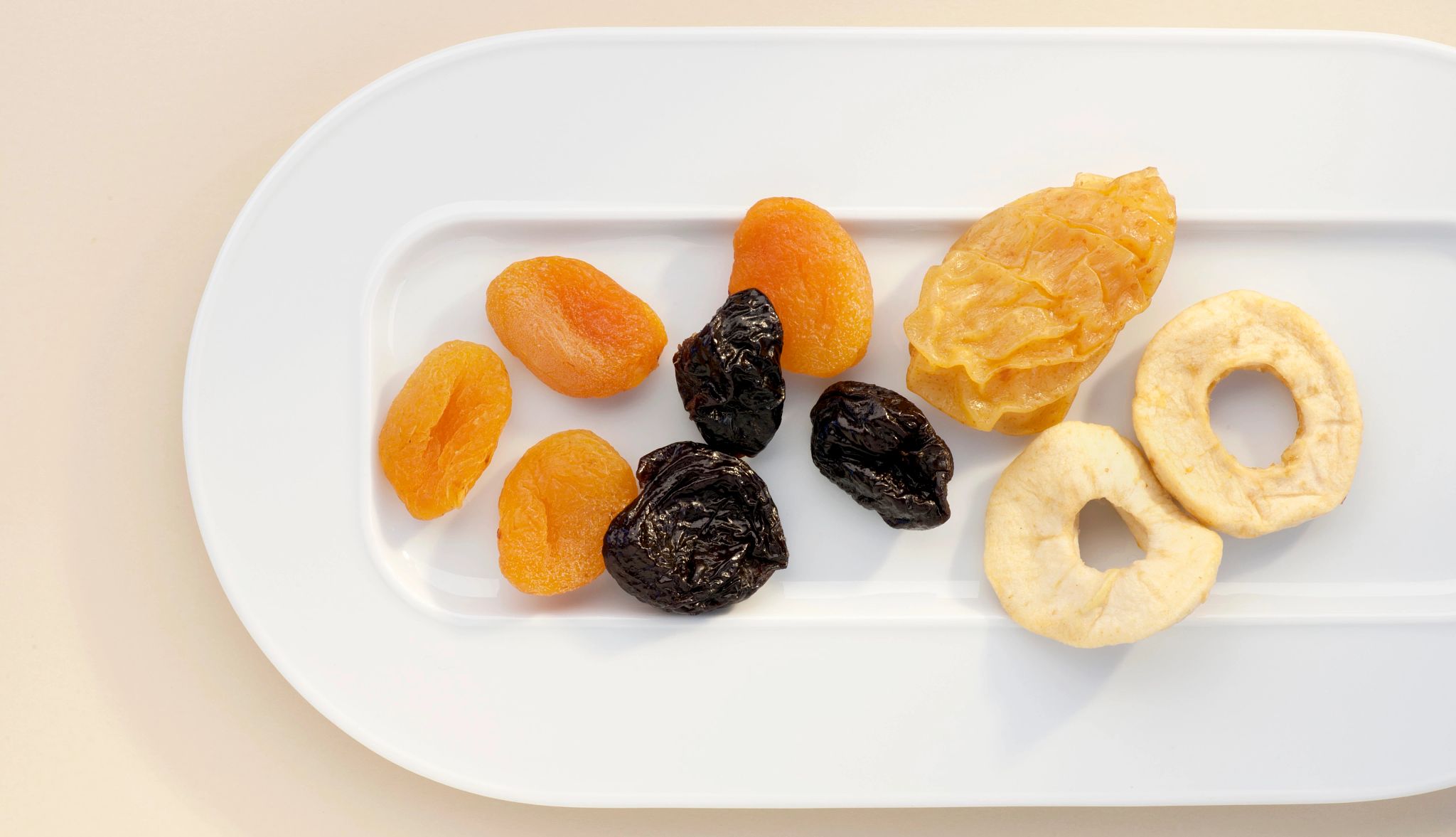Play all audios:
It’s the star of the bulk food aisle, a staple in any hiker’s backpack and a key ingredient in your classic holiday fruitcake. But despite its name and origins, dried fruit often finds
itself at the center of debate: Is it good for you? Or is it a sugar and calorie bomb? Here’s what you need to know about dried fruit, including how to shop for the healthiest options. IS
DRIED FRUIT HIGH IN SUGAR? All fruit contains sugar — not the kind you find in candy bars and cereals, but natural sugar. One large apple has about 22 grams of the sweet stuff, according to
the U.S. Department of Agriculture (USDA); an orange has about 14 grams. When you dry a piece of fruit, you remove nearly all the water, but the sugar content remains in a concentrated form,
explains Alice H. Lichtenstein, professor of nutrition science and policy at Tufts University’s Friedman School of Nutrition Science and Policy. A half of a raw apricot has about 1.6 grams
of sugar, according to the USDA’s FoodData Central tool, which is similar to the amount of sugar in half of a dried apricot. The difference is, with dried fruit it can be easier to consume
larger portions (and more calories) because you’re left with a smaller volume. You wouldn’t eat five or six raw apricots in one sitting, but it’s easy to eat five or six dried apricots.
Similarly, 10 fresh grapes might be a satisfying snack, whereas 10 raisins don’t even fill your palm, so throwing back a handful isn’t difficult. “You need to watch your serving size;
it's not a one-to-one,” says Amanda Sawyer, a registered dietitian and associate professor in the department of nutrition at University of North Carolina’s Gillings School of Global
Public Health. Indeed, a half cup of grapes, about 15 total, contains roughly 7.5 grams of sugar, whereas a half cup of raisins contains about 47 grams of sugar, according to the USDA. “You
don't want to eat the size of a whole apple in dried fruit,” Sawyer says. BEWARE OF ADDED SUGARS AND OTHER INGREDIENTS Some dried fruits — particularly candied fruits — can contain
added sugar so you’ll want to pay attention to the nutrient facts panel and ingredient list, Lichtenstein says. Cranberries, which are naturally tart, typically contain added sugar in
their dried form. So do some brands of banana chips. Know, too, that some banana chip products even contain saturated fats, like coconut oil, so be sure to pay attention to the package and
look for dried banana chips with no added sugars or oils. And when you mix dried fruits with say, the butter, sugar and eggs in fruitcake or white chocolate bark, any nutritional benefits
are no doubt negated. Another consideration: Many types of dried fruits are sticky in texture, Lichtenstein points out, “so it's a good idea to be a little more aware of dental hygiene”
after you eat it.

